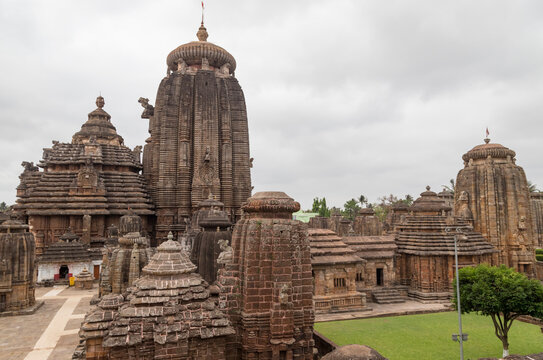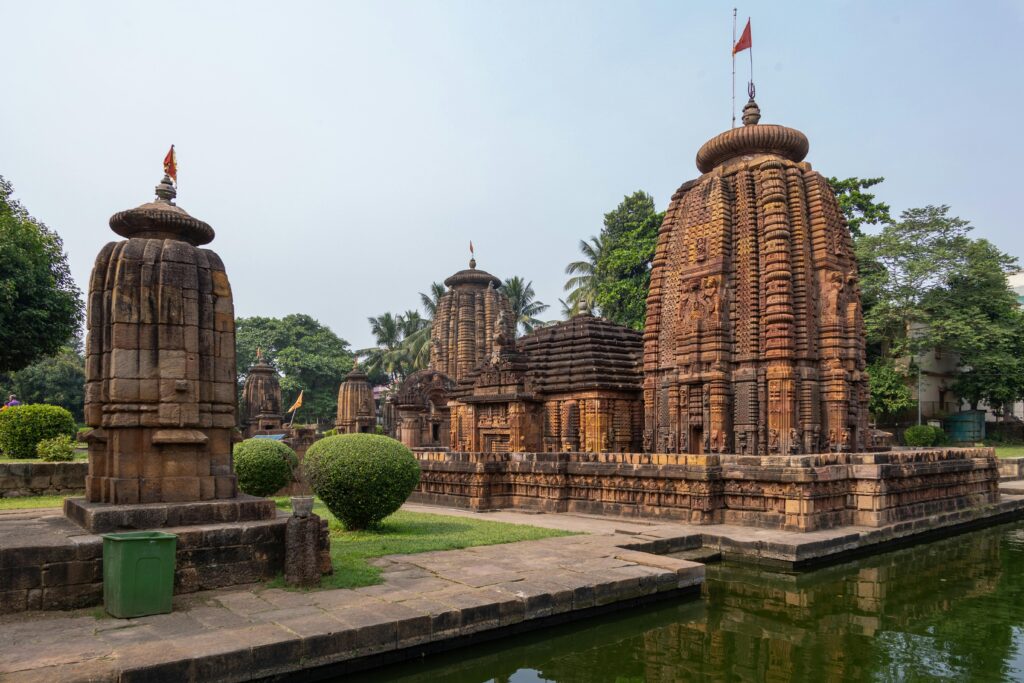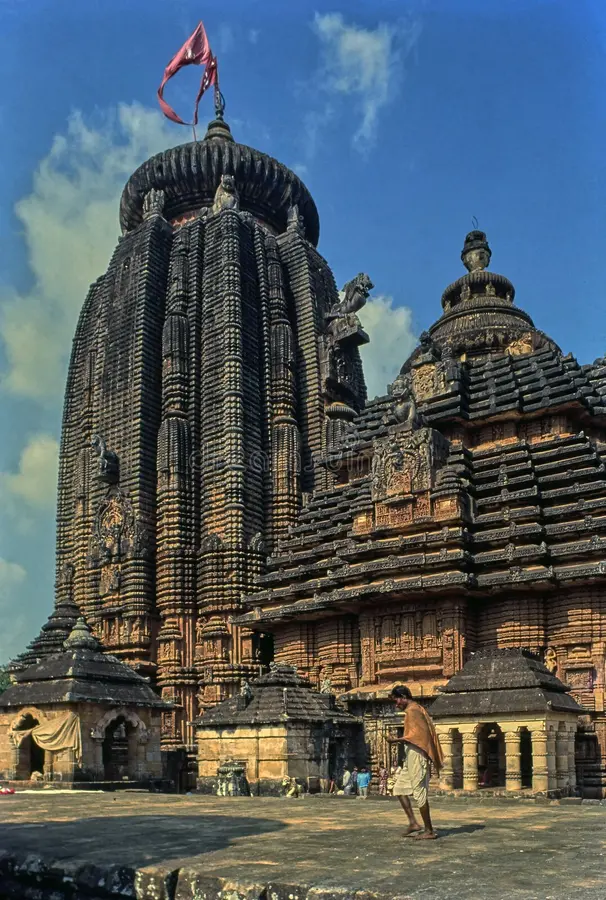
Odisha, the temple state, has India’s most beautiful architecture. Among them, the Lingaraj Temple in Bhubaneswar is a glimpse of the majesty of Kalinga architecture and the religious fervor that has flowed through the state for centuries. This huge temple, a temple of Lord Shiva, is not merely a site of pilgrimage for religion but a stunning monument beckoning pilgrims and history lovers to visit and bask in its glory.
Legacy of Lingaraj Temple
Dating back to the 11th century, Lingaraj Temple is believed to have been constructed by King Jajati Keshari of the Somavamsi dynasty. Some of the temple complexes were, however, believed to have been there even before, dating back to the 7th century. The temple is a perfect example of the evolution of the Kalinga school of architecture and had a deep influence on other Odisha temples, including the world-famous Sun Temple at Konark.
What is unique about Lingaraj Temple is that it is a Harihara temple, a combination of Lord Shiva and Lord Vishnu. It is a lovely syncretism of Shaivism and Vaishnavism, an exhibition of the tolerant religious society of ancient India.
Architectural Grandeur
Stretched over humongous 25,000 square feet, the temple complex is ringed by ginormous fortification walls and houses over 50 smaller shrines dedicated to various gods and goddesses. The central temple is classical rekha deula (tower) in form, reaching a giganic height of 180 feet (55 meters), the tallest among Bhubaneswar temples.
The four significant parts of the temple are:
- Garbhagriha (Sanctum Sanctorum) – Wherein the worshiped Swayambhu (self-existent) Lingam of Lord Shiva resides.
- Jagamohana (Assembly Hall) – The principal hall in which citizens gather.
- Natamandira (Festival Hall) – Where temple ritual ceremonies and dance recitals are done.
- Bhoga Mandapa (Hall of Offerings) – Where the offerings of food and prasad to the god are made.
Temple walls externally have been adorned with beautiful sculptures of gods, divine dancers, and mythological scenes. The imagination and precision that have been invested in the use of the sculptures tell us a great deal about how skilled Odia sculptors were.
Spiritual Significance
Lingaraj Temple is India’s holiest Shiva temple. Lingam within is reportedly having occurred naturally (Swayambhu) and reportedly enlarging annually in size. It is the epicenter of religious activity in Odisha and receives thousands of devotees daily into the complex.
One of the major festivals here is Maha Shivaratri, during which thousands of lamps are lit within and outside the temple, and intricate rituals are done. The other major festival is the Chandan Yatra, during which the deity is carried on boat procession within the Bindusagar Lake, just near the temple.
Unique Traditions and Rituals
In contrast to all the other Shiva temples, where Shaivite worship is the common characteristic, there have been remnants of Vaishnavism even here at Lingaraj Temple. The figure of the deity in charge of the temple, Harihara, indicates synthesis of both orders.
The second phenomenon which is so awe-inspiring is that there is no non-Hindu facility to visit on the temple campus. But inquisitive minds may get a glimpse of the temple from a distance outside.
Bindusagar Lake – The Sacred Waterbody
Near Lingaraj Temple is Bindusagar Lake, a sacred water body that is believed to have water from all the sacred rivers of India. The pilgrims bathe in the lake as consecrating. The lake continues to be a part of temple rituals, particularly during Chandan Yatra and other festivals.
Bhubaneswar Tour Around Lingaraj Temple
No trip to Lingaraj Temple is ever complete without a trip around other site attractions in the immediate vicinity of Bhubaneswar. Bhubaneswar, the Temple City of India, is full of some of India’s grand old temples of which are:
- Mukteshwar Temple – A very beautiful specimen of Kalinga architecture, which is embellished with quaintly pretty torana (arched gateway).
- Rajarani Temple – Famous for its beautiful sculpture carved temple and adjoining typical red and yellow sandstone building.
- Parashurameswar Temple – Bhubaneswar’s ancient Shiva temple.
- Dhauli Hills – Site of Emperor Ashoka’s conversion to Buddhism following the Kalinga War, famous rock edicts, and peace pagoda.
For history enthusiasts, the Odisha State Museum and Nandankanan Zoological Park are all about state cultural and natural heritage.
Best Time to Visit and Travel Tips
Lingaraj Temple is open from morning to evening every day. No admission fee, but one may bring the old standards and dress modestly on temple grounds.
The best time to visit would be during Maha Shivaratri (Feb/March) or Ratha Yatra (June/July) when the temple campus is decorated with jewelry and special pujas are performed. But to observe the everyday calm of the temple sans all that bling, early mornings are the most serene time to come.
Travel tips:
- Dress Modestly: Being a temple campus, Indian traditional dressing would be the way to go.
- No Photos Inside: No photograph or mobile use inside the temple complex.
- Respect Norms: Only non-Hindus are allowed a glimpse of the temple on the observation floor but not otherwise.
- Drink Plenty Water: Bhubaneswar will be hot, so bring an additional bottle of water.
Conclusion
Lingaraj Temple is not a temple but a living history of the past of Odisha. Be it your choice, spiritual tourist, historian or an architect, there will be something inside the temple waiting to leave its memory in your life so dear and strong that you would never like to erase it. Travel Bhubaneswar without a visit to this thousand-year-old wonder and the city travel is never complete.
From its towering spire and lace-carvings to its religious iconography and unique rituals, Lingaraj Temple is the crown jewel of Indian heritage. It is proof of heavenly skill, artistic prowess, and cross-fertilization of religious beliefs that has been the very substance of Odisha for centuries. A visit to this beautiful temple is more a trip, nay, an introduction to India’s distant past, its enduring faith, and its eternal art.

